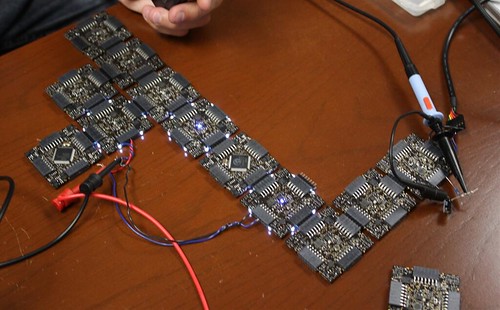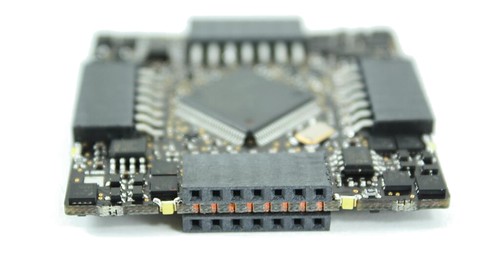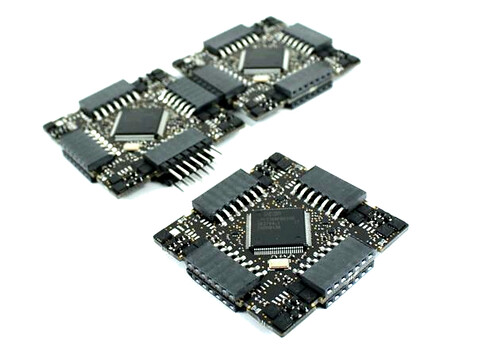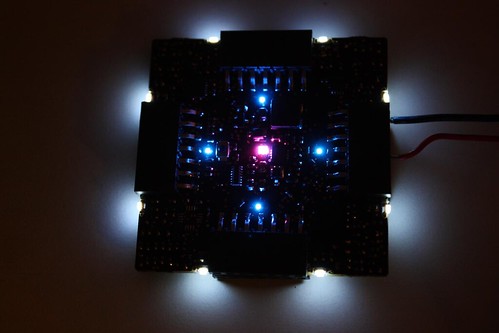I had posted about the Illuminato that Chris and I built a while back over here: http://www.arduino.cc/cgi-bin/yabb2/YaBB.pl?num=1231771842/0 so here's the upgraded new version ![]() The Illuminato was my little version of the Arduino board that I built to teach myself more about circuit layout.
The Illuminato was my little version of the Arduino board that I built to teach myself more about circuit layout.
The Illuminato X Machina project is a lot like the original Illuminato, except it's shaped like a square and has reversible connectors all around the edges, because the goal is to make a "robust computational platform" and a modular motherboard (these were all concepts I learned about a few months back when I was teaching myself more and more about electrical engineering theory as part of my self-teaching program, though with a LOT of help from Dave Ackley), and it runs an ARM chip, 512K flash memory, 72MHz (for now), 32K of ram.

The goal of the project was to make a platform for open source hardware and DIY experimentation into massively parallel computer architectures, since the world seems to be gravitating away from monolithic linear single chips to multicore, multiprocessor, but there isn't really a way for normal people (or hackers) to experiment with this stuff without buying $20k computing clusters or workstations from Intel. So it sounded ideal for an open source hardware platform, and like a cool hard problem... it's a lot more theoretical than anything I've ever done, but I've been learning a LOT along the way...


Here are a couple pictures of boards connected to each other, scaling up the parallel architecture:


And each board has a crazy bootloader that Dave wrote which allows each board to completely reprogram neighboring boards like a set of dominoes:
(sorry i don't know how to embed videos?)
Each board also has the option of having LED's on the edges (as in the actual edges of the PCB, not the top or the bottom, but like in the pcb wafer itself), which makes the boards look neat in the dark, because they're each communicating with each other, and they look like ufos:


I don't know, but I think this might be the first time anyone's ported the Arduino IDE to the ARM (I know the Cortino board has an arm on it, but you needed a special compiler so you couldn't use the Arduino language). It was NOT easy to do, but now it's done, and Chris and Omar and I have the code to prove it (we forked the Arduino codebase over the last 6 months to hack it together, so any sketch now compiles natively for ARM (Dave ported all the arduino language functions too, which was crazy)... I'm still zipping all the files up into a standalone file, but yeah it's all open source of course and it would be really cool if it got incorporated into the main branch of the Arduino IDE...
Anyway, here are some more pictures of the project, and here's a blog post about it ![]()
wow that was a lot of typing...
